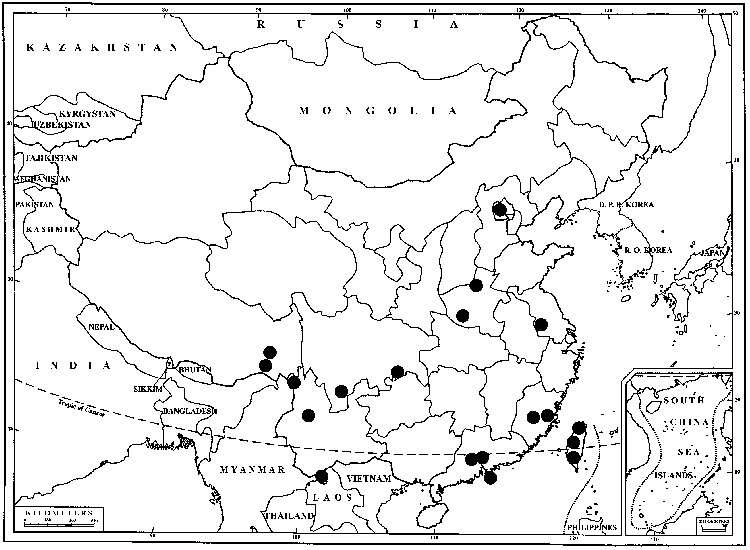Barbula indica
in E. G. Steudel, Nomencl. Bot. 2: 72. 1824,.
Stems to 1.2 cm. Leaves firm when wet, long-ovate to ligulate, 0.5–1.8 (–2) mm, base often elliptic, widened not strongly sheathing, margins plane or weakly recurved to mid leaf, apex broadly acute to rounded, apiculate or occasionally muticous; costa percurrent or ending 1–4 cells before the apex, abaxial costal surface doubly prorate (rough by projections at each end of superficial cells), often also with simple or 2-fid papillae, hydroids absent; distal laminal cells firm-walled, quadrate, 7–10 µm wide, 1: 1, papillose. Specialized asexual reproduction by gemmae borne on stalks in leaf-axils. Perichaetial leaves obtuse to broadly acute, strongly sheathing and convolute. Seta 1–1.8 cm. Theca 0.8–1.2 mm. Spores 10–12 µm.
Distribution

North America, Mexico, West Indies, Central America, South America, Asia, Africa, Australia
Discussion
Varieties 2 (2 in the flora).
Sporophytes of Barbula indica are rare in the flora area (collection date of the single fruiting collection seen not given). The distal laminal margins are usually plane and the abaxial surface of the costa is prorate, i.e., papillose by projecting ends of cell walls, often forming doubled projections, but sometimes additionally papillose by simple or 2-fid papillae.
Selected References
None.
Key
| 1 | Leaves narrowly oval to elliptic, margins plane or weakly recurved at mid leaf; specialized asexual reproduction by small, green, obovoid gemmae occurring in masses in distal leaf axils, of several cells, 70-90 µm | Barbula indica var. indica |
| 1 | Leaves broadly ovate, margins plane; specialized asexual reproduction by massive, brown, elliptic to spheric, many-celled gemmae occurring singly or very few together in distal leaf axils, of up to 50 cells, 95-300 µm | Barbula indica var. gregaria |